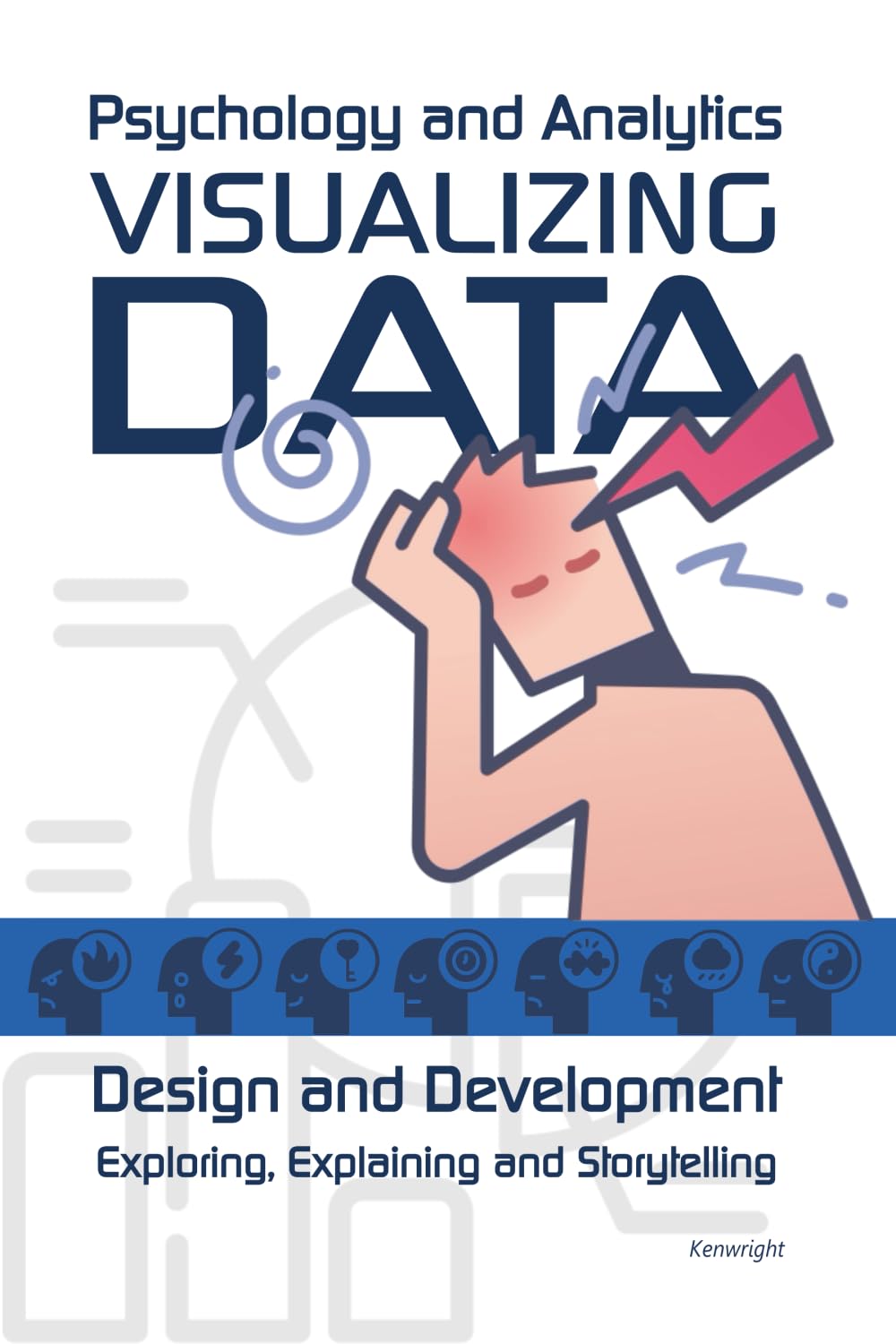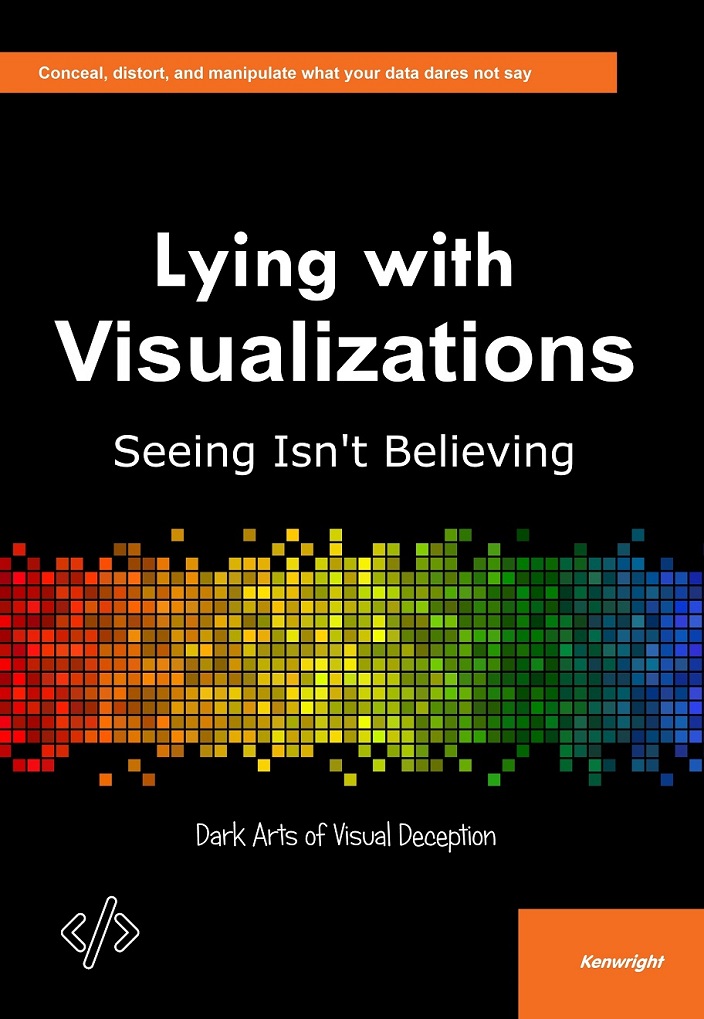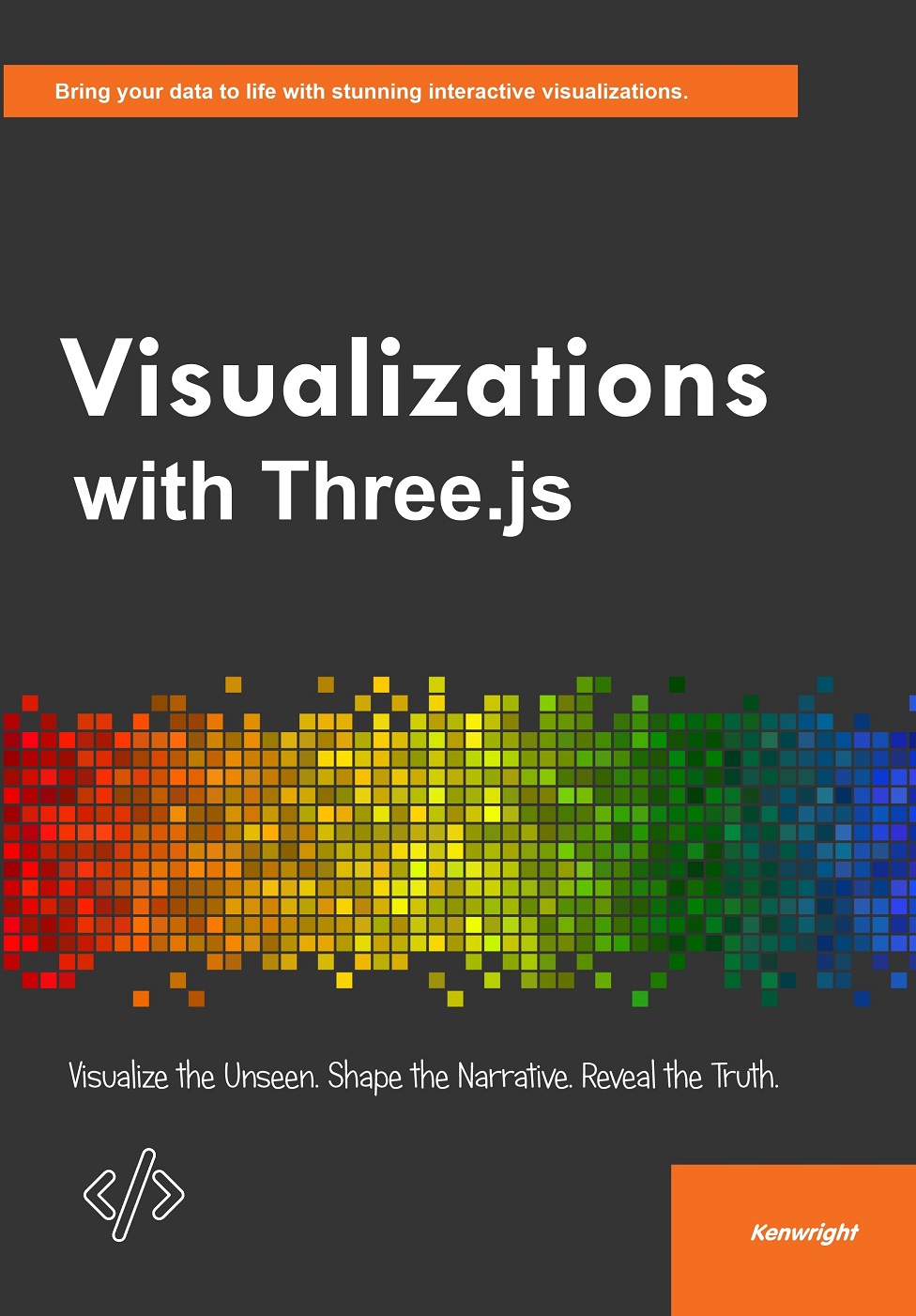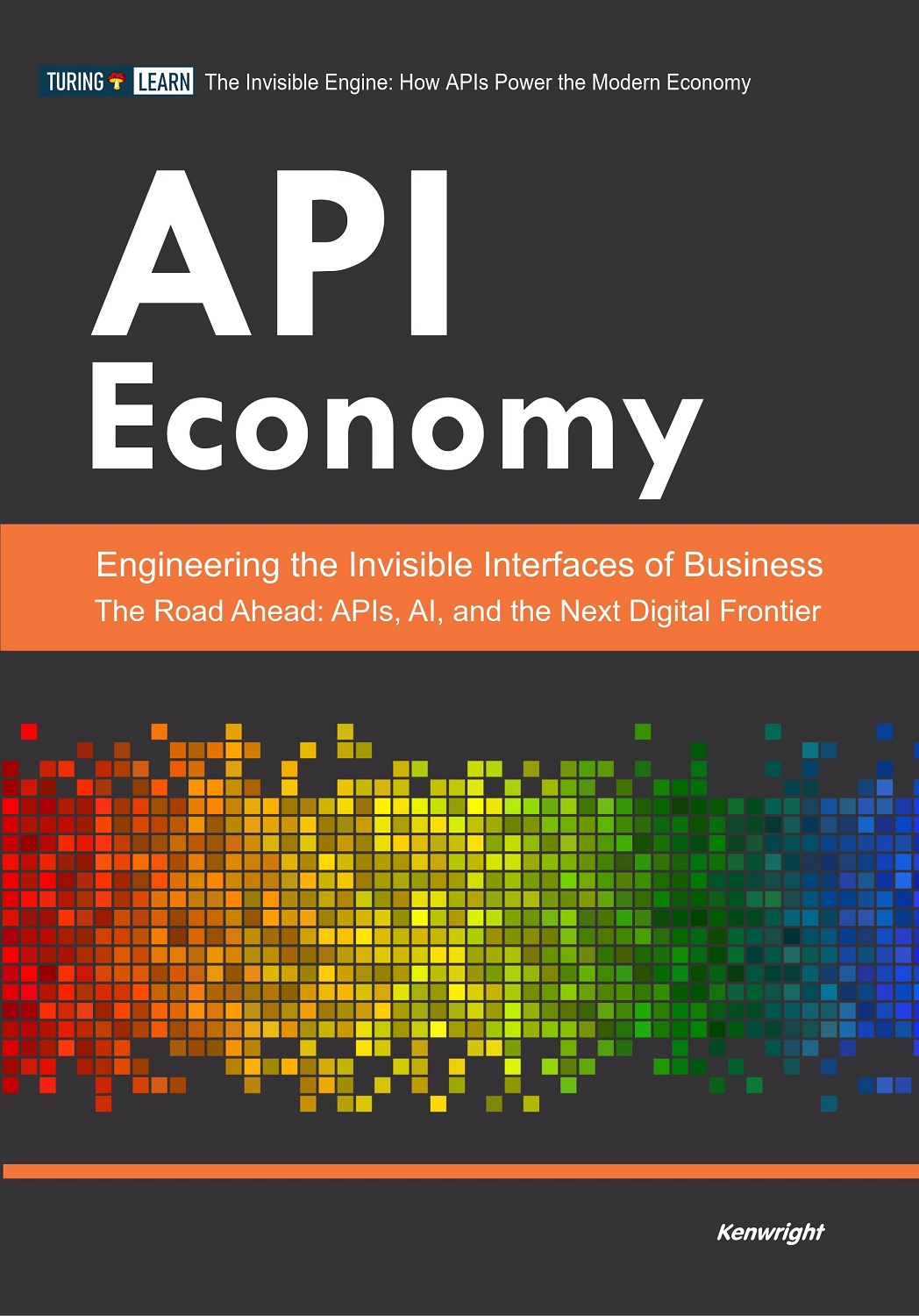
Quick Facts
- ISBN: 979-8286983858
- Published: May 12, 2025
- Pages: 266
- Language: English
- Categories: Books, Computers & Technology, Data Visualization, Psychology, Analytics
About This Book
The accessibility of this book makes it an excellent choice for self-study. Visualizing Data: Psychology and Analytics - Exploring, Explaining and Storytelling 's clear explanations and logical progression through data visualization, psychology, analytics, storytelling, communication ensure that readers can follow along without feeling overwhelmed, regardless of their prior experience in data visualization and psychology and analytics and storytelling and communication. Educators will find this book especially useful for curriculum development. The structured layout, combined with discussion prompts and suggested readings on data visualization, psychology, analytics, storytelling, communication, makes it easy to integrate into a variety of data visualization and psychology and analytics and storytelling and communication courses. Throughout the book, Visualizing Data: Psychology and Analytics - Exploring, Explaining and Storytelling maintains a tone that is both authoritative and encouraging. This balance helps demystify complex ideas in data visualization, psychology, analytics, storytelling, communication and fosters a sense of confidence in readers as they progress through the material.
Key Features
- Case-based learning scenarios
- Practical examples and case studies
- Annotated bibliographies for deeper exploration
- Glossary of key terms
- Cross-references to related concepts
About the Author
Visualizing Data: Psychology and Analytics - Exploring, Explaining and Storytelling
With a PhD in Books, Visualizing Data: Psychology and Analytics - Exploring, Explaining and Storytelling has dedicated their career to exploring data visualization, psychology, analytics. Their previous books have been translated into 18 languages.
Related News & Articles
The Key Book Publishing Paths: 2025–2026
Oct 05, 2025Should you self-publish or traditionally publish? This infographic will help you determine the best choice for you and your project.
janefriedman.comHow to Describe Your Target Readership So It’s Meaningful to Agents and Publishers
Oct 10, 2025Book proposals come together much more easily when the author has confidence and clarity on their target audience.
janefriedman.comSubstack Is Both Great and Terrible for Authors
Sep 27, 2025Substack's business model relies on you charging readers, but don’t discount the long-term value of what you offer for free.
janefriedman.comAuthor Platform Is Not a Requirement to Sell Your Novel or Children’s Book
Oct 05, 2025Publishers and literary agents know this, even if they pretend otherwise to conveniently reject you and your work.
janefriedman.comWhen—and Whether—to Hire a Developmental Editor
Oct 07, 2025A developmental editor is like any tool in your toolbox. Knowing whether and when to use one will help you get the most bang for your buck.
janefriedman.comReader Reviews

Robert Jackson
Required Reading for Anyone in the Field
From the moment I started reading, I could tell this book was different. With over 3 years immersed in data visualization and psychology and analytics and storytelling and communication, I've seen my fair share of texts on data visualization, psychology, analytics, storytelling, communication, but Visualizing Data: Psychology and Analytics - Exploring, Explaining and Storytelling 's approach is refreshingly original. The discussion on storytelling challenged my assumptions and offered a new lens through which to view the subject. I approached this book as someone relatively new to data visualization and psychology and analytics and storytelling and communication, and I was pleasantly surprised by how quickly I grasped the concepts around data visualization, psychology, analytics, storytelling, communication. Visualizing Data: Psychology and Analytics - Exploring, Explaining and Storytelling has a gift for explaining complex ideas clearly without oversimplifying. The exercises at the end of each chapter were invaluable for reinforcing the material. It's rare to find a book that serves both as an introduction and a reference work, but this one does so admirably. As someone with 4 years of experience in data visualization and psychology and analytics and storytelling and communication, I found this book to be an exceptional resource on data visualization, psychology, analytics, storytelling, communication. Visualizing Data: Psychology and Analytics - Exploring, Explaining and Storytelling presents the material in a way that's accessible to beginners yet still valuable for experts. The chapter on data visualization was particularly enlightening, offering practical applications I hadn't encountered elsewhere.

Patricia Wilson
So Good I Read It Twice
I approached this book as someone relatively new to data visualization and psychology and analytics and storytelling and communication, and I was pleasantly surprised by how quickly I grasped the concepts around data visualization, psychology, analytics, storytelling, communication. Visualizing Data: Psychology and Analytics - Exploring, Explaining and Storytelling has a gift for explaining complex ideas clearly without oversimplifying. The exercises at the end of each chapter were invaluable for reinforcing the material. It's rare to find a book that serves both as an introduction and a reference work, but this one does so admirably. What sets this book apart is its balanced approach to data visualization, psychology, analytics, storytelling, communication. While some texts focus only on theory or only on practice, Visualizing Data: Psychology and Analytics - Exploring, Explaining and Storytelling skillfully bridges both worlds. The case studies in chapter 7 provided real-world context that helped solidify my understanding of data visualization and psychology and analytics and storytelling and communication. I've already recommended this book to several colleagues. Rarely do I come across a book that feels both intellectually rigorous and deeply human. Visualizing Data: Psychology and Analytics - Exploring, Explaining and Storytelling 's treatment of data visualization, psychology, analytics, storytelling, communication is grounded in empathy and experience. The chapter on psychology left a lasting impression, and I've already begun applying its lessons in my classroom.

Patricia Hernandez
A Brilliant Synthesis of Theory and Practice
What impressed me most was how Visualizing Data: Psychology and Analytics - Exploring, Explaining and Storytelling managed to weave storytelling into the exploration of data visualization, psychology, analytics, storytelling, communication. As a graduate student in data visualization and psychology and analytics and storytelling and communication, I found the narrative elements made the material more memorable. Chapter 4 in particular stood out for its clarity and emotional resonance. This book exceeded my expectations in its coverage of data visualization, psychology, analytics, storytelling, communication. As a student in data visualization and psychology and analytics and storytelling and communication, I appreciate how Visualizing Data: Psychology and Analytics - Exploring, Explaining and Storytelling addresses both foundational concepts and cutting-edge developments. The writing style is engaging yet precise, making even dense material about data visualization, psychology, analytics, storytelling, communication enjoyable to read. I've already incorporated several ideas from this book into my research with excellent results. What sets this book apart is its balanced approach to data visualization, psychology, analytics, storytelling, communication. While some texts focus only on theory or only on practice, Visualizing Data: Psychology and Analytics - Exploring, Explaining and Storytelling skillfully bridges both worlds. The case studies in chapter 4 provided real-world context that helped solidify my understanding of data visualization and psychology and analytics and storytelling and communication. I've already recommended this book to several colleagues.

Charles Martinez
Worth Every Penny and Then Some
This book exceeded my expectations in its coverage of data visualization, psychology, analytics, storytelling, communication. As a student in data visualization and psychology and analytics and storytelling and communication, I appreciate how Visualizing Data: Psychology and Analytics - Exploring, Explaining and Storytelling addresses both foundational concepts and cutting-edge developments. The writing style is engaging yet precise, making even dense material about data visualization, psychology, analytics, storytelling, communication enjoyable to read. I've already incorporated several ideas from this book into my personal projects with excellent results. What sets this book apart is its balanced approach to data visualization, psychology, analytics, storytelling, communication. While some texts focus only on theory or only on practice, Visualizing Data: Psychology and Analytics - Exploring, Explaining and Storytelling skillfully bridges both worlds. The case studies in chapter 2 provided real-world context that helped solidify my understanding of data visualization and psychology and analytics and storytelling and communication. I've already recommended this book to several colleagues. I've been recommending this book to everyone in my network who's even remotely interested in data visualization, psychology, analytics, storytelling, communication. Visualizing Data: Psychology and Analytics - Exploring, Explaining and Storytelling 's ability to distill complex ideas into digestible insights is unmatched. The section on storytelling sparked a lively debate in my study group, which speaks to the book's power to provoke thought.

Robert Wilson
Changed My Perspective Completely
This book exceeded my expectations in its coverage of data visualization, psychology, analytics, storytelling, communication. As a student in data visualization and psychology and analytics and storytelling and communication, I appreciate how Visualizing Data: Psychology and Analytics - Exploring, Explaining and Storytelling addresses both foundational concepts and cutting-edge developments. The writing style is engaging yet precise, making even dense material about data visualization, psychology, analytics, storytelling, communication enjoyable to read. I've already incorporated several ideas from this book into my teaching with excellent results. Having read numerous books on data visualization and psychology and analytics and storytelling and communication, I can confidently say this is among the best treatments of data visualization, psychology, analytics, storytelling, communication available. Visualizing Data: Psychology and Analytics - Exploring, Explaining and Storytelling 's unique perspective comes from their 11 years of hands-on experience, which shines through in every chapter. The section on psychology alone is worth the price of admission, offering insights I haven't seen elsewhere in the literature.

James Thomas
An Instant Favorite on My Bookshelf
From the moment I started reading, I could tell this book was different. With over 10 years immersed in data visualization and psychology and analytics and storytelling and communication, I've seen my fair share of texts on data visualization, psychology, analytics, storytelling, communication, but Visualizing Data: Psychology and Analytics - Exploring, Explaining and Storytelling 's approach is refreshingly original. The discussion on storytelling challenged my assumptions and offered a new lens through which to view the subject. What sets this book apart is its balanced approach to data visualization, psychology, analytics, storytelling, communication. While some texts focus only on theory or only on practice, Visualizing Data: Psychology and Analytics - Exploring, Explaining and Storytelling skillfully bridges both worlds. The case studies in chapter 6 provided real-world context that helped solidify my understanding of data visualization and psychology and analytics and storytelling and communication. I've already recommended this book to several colleagues. I've been recommending this book to everyone in my network who's even remotely interested in data visualization, psychology, analytics, storytelling, communication. Visualizing Data: Psychology and Analytics - Exploring, Explaining and Storytelling 's ability to distill complex ideas into digestible insights is unmatched. The section on analytics sparked a lively debate in my study group, which speaks to the book's power to provoke thought.

Robert Martin
Packed with Wisdom and Real-World Insight
Rarely do I come across a book that feels both intellectually rigorous and deeply human. Visualizing Data: Psychology and Analytics - Exploring, Explaining and Storytelling 's treatment of data visualization, psychology, analytics, storytelling, communication is grounded in empathy and experience. The chapter on psychology left a lasting impression, and I've already begun applying its lessons in my classroom. What impressed me most was how Visualizing Data: Psychology and Analytics - Exploring, Explaining and Storytelling managed to weave storytelling into the exploration of data visualization, psychology, analytics, storytelling, communication. As a lifelong learner in data visualization and psychology and analytics and storytelling and communication, I found the narrative elements made the material more memorable. Chapter 8 in particular stood out for its clarity and emotional resonance. This book exceeded my expectations in its coverage of data visualization, psychology, analytics, storytelling, communication. As a researcher in data visualization and psychology and analytics and storytelling and communication, I appreciate how Visualizing Data: Psychology and Analytics - Exploring, Explaining and Storytelling addresses both foundational concepts and cutting-edge developments. The writing style is engaging yet precise, making even dense material about data visualization, psychology, analytics, storytelling, communication enjoyable to read. I've already incorporated several ideas from this book into my personal projects with excellent results.

Patricia Jackson
Required Reading for Anyone in the Field
Having read numerous books on data visualization and psychology and analytics and storytelling and communication, I can confidently say this is among the best treatments of data visualization, psychology, analytics, storytelling, communication available. Visualizing Data: Psychology and Analytics - Exploring, Explaining and Storytelling 's unique perspective comes from their 13 years of hands-on experience, which shines through in every chapter. The section on analytics alone is worth the price of admission, offering insights I haven't seen elsewhere in the literature. Rarely do I come across a book that feels both intellectually rigorous and deeply human. Visualizing Data: Psychology and Analytics - Exploring, Explaining and Storytelling 's treatment of data visualization, psychology, analytics, storytelling, communication is grounded in empathy and experience. The chapter on psychology left a lasting impression, and I've already begun applying its lessons in my mentoring sessions.

Jessica Martinez
Insightful, Practical, and Engaging
I approached this book as someone relatively new to data visualization and psychology and analytics and storytelling and communication, and I was pleasantly surprised by how quickly I grasped the concepts around data visualization, psychology, analytics, storytelling, communication. Visualizing Data: Psychology and Analytics - Exploring, Explaining and Storytelling has a gift for explaining complex ideas clearly without oversimplifying. The exercises at the end of each chapter were invaluable for reinforcing the material. It's rare to find a book that serves both as an introduction and a reference work, but this one does so admirably. What impressed me most was how Visualizing Data: Psychology and Analytics - Exploring, Explaining and Storytelling managed to weave storytelling into the exploration of data visualization, psychology, analytics, storytelling, communication. As a graduate student in data visualization and psychology and analytics and storytelling and communication, I found the narrative elements made the material more memorable. Chapter 3 in particular stood out for its clarity and emotional resonance.

Richard Moore
A Brilliant Synthesis of Theory and Practice
Rarely do I come across a book that feels both intellectually rigorous and deeply human. Visualizing Data: Psychology and Analytics - Exploring, Explaining and Storytelling 's treatment of data visualization, psychology, analytics, storytelling, communication is grounded in empathy and experience. The chapter on analytics left a lasting impression, and I've already begun applying its lessons in my client work. What sets this book apart is its balanced approach to data visualization, psychology, analytics, storytelling, communication. While some texts focus only on theory or only on practice, Visualizing Data: Psychology and Analytics - Exploring, Explaining and Storytelling skillfully bridges both worlds. The case studies in chapter 3 provided real-world context that helped solidify my understanding of data visualization and psychology and analytics and storytelling and communication. I've already recommended this book to several colleagues. As someone with 8 years of experience in data visualization and psychology and analytics and storytelling and communication, I found this book to be an exceptional resource on data visualization, psychology, analytics, storytelling, communication. Visualizing Data: Psychology and Analytics - Exploring, Explaining and Storytelling presents the material in a way that's accessible to beginners yet still valuable for experts. The chapter on communication was particularly enlightening, offering practical applications I hadn't encountered elsewhere.
Readers Also Enjoyed

Lying with Visualizations: Seeing Isn't Believing
View Details
Visualizations with Three.js
View Details
API Economy
View Details
Reader Discussions
Share Your Thoughts
James Jones
I love how the author weaves personal anecdotes into the discussion of psychology. It made the material feel more relatable.
Posted 20 days ago ReplyRichard Brown
I appreciated the visual aids used to explain communication. They really helped clarify some abstract ideas.
Posted 26 days ago ReplySarah Garcia
This section on storytelling really challenged my assumptions. I had to pause and reflect before moving on.
Posted 24 days ago ReplyKaren Thomas
I'm glad you mentioned storytelling. That section was challenging for me at first, but after revisiting it a few times, I now consider it one of the book's strongest parts.
Posted 5 days agoThomas Wilson
The author's tone when discussing psychology felt especially passionate - did anyone else pick up on that?
Posted 3 days ago ReplyMary Brown
I noticed a subtle shift in tone when the author discussed data visualization. Did you catch that too?
Posted 5 days agoDavid Thomas
I love how the author weaves personal anecdotes into the discussion of storytelling. It made the material feel more relatable.
Posted 17 days ago ReplyRobert Taylor
The way analytics was framed reminded me of a conversation I had recently. It's clearly a topic that resonates widely.
Posted 10 days ago